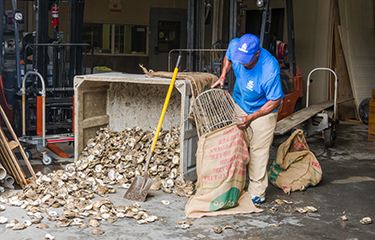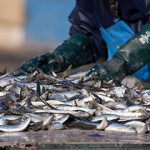Hurricanes took USD 570 million bite out of Louisiana’s USD 2.4 billion seafood economy

The seafood industry created USD 2.47 billion (EUR 2.27 billion) in economic activity in Louisiana in 2021 and accounted for an estimated 31,000 jobs, or one in every 70 jobs in the southern U.S. state.
Crawfish accounted for USD 200 million (EUR 183 million), shrimp sales were valued at USD 120 million (EUR 110 million), crab was valued at USD 45 million (EUR 41 million), and oysters at USD 47 million (EUR 41.3 million), according to an industry snapshot released by the Public Affairs Research Council for Louisiana.
Louisiana produces more than 90 percent of the country’s crawfish production, with around 1,600 farmers and 800 commercial fishers in Louisiana harvesting an estimated 130 million pounds of crawfish annually, according to the Louisiana Crawfish Promotion and Research Board. The state also typically accounts for around one-third of all domestically caught shrimp – 107 million pounds in 2017, though the catch dropped to 74 million pounds in 2022. Its blue crab landings have surpassed 40 million pounds annually since 1997 and reached 44 million pounds in 2021, and the state also pulled up around 11 million pounds of oysters in 2021, accounting for 50 percent of the nation’s oyster harvest.
But recent hurricanes have cost the state’s seafood industry at least USD 570 million (EUR 522.7 million), according to “Projected Infrastructure, Revenue and Resource Losses to Louisiana Fisheries from the Hurricanes of 2020 and 2021,” a study from the Louisiana State University Agricultural Center and the Louisiana Department of Wildlife and Fisheries.
Hurricanes Laura, Delta, Zeta, and Ida each hit Louisiana between August 2020 and August 2021, resulting in USD 304 million (EUR 278.8 million) in damages to the state’s fishing infrastructure, and seafood industry revenue loss in 22 coastal parishes in the state totaling USD 155 million (EUR 142.1 million). An additional USD 118 million (EUR 108.2 million) in losses came from degradation or destruction of natural habitat for oysters and finfish. The report didn’t take into account impacts from the hurricanes on Louisiana’s aquaculture industry, which provides a majority of the state's crawfish supply.
"There's still boats stranded in certain areas," Louisiana Seafood Executive Director Samantha Carroll told the Lafourche Gazette.
The state’s industry is “still trying to pick up the pieces” after the damage caused by the hurricanes, Carroll said.
"It was waiting on everything to ramp back up so these fishermen could get back on the water and it took a while," Carroll said. "It's going to be a long recovery for our coast, the fishing industry."
Louisiana Department of Wildlife and Fisheries Economist Jack Isaacs said the hurricanes were a double whammy to the state’s seafood industry, as they hit as the industry was already struggling with the fallout of the Covid-19 crisis.
"There was a drop in several parameters during the period, but it's hard to isolate out effect of Covid from other factors affecting the seafood industry, both positively and negatively," he told the Gazette. "The industry is going through a lot of difficulties right now. It's always facing some type of challenge. For shrimp, imports are pushing the prices down, for other species, there's habitat issues.”
Louisiana Shrimp Association President Acy Cooper told WDSU shrimpers lose five to 10 days of fishing each time the state is hit by a severe storm. He also blamed a flood of cheap imported shrimp, higher fuel and equipment prices, and fresh-water diversions for hurting his industry. He said the number of shrimpers in Louisiana has dropped from 20,000 in 2002 to about 6,000 currently.
“We are resilient, but I don’t know where the breaking point’s at" ...
Photo courtesy of William A. Morgan/Shutterstock




Share